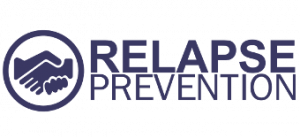4.1 Standard: Harm reduction
4.1.1 Standard statement
As a first priority, those at risk of using substances are assisted to remain within the family and/or community context.
4.1.2 Outcome
- Rights and legislation: The admission process is in line with current legislation and the patients’/clients’ rights.
Notes and examples: Copies of legislation should be available and staff should be informed and educated on the contents.
- Non-discrimination: Admission is available to all suitable patients/clients irrespective of their race, ethnicity, gender, culture, ideology, political or religious beliefs, sexual orientation, language and HIV status (see section 1.4). This is reflected in the centre’s admission criteria.
- Accessibility: The centre is accessible and available in terms of entry dates and times and prioritizes admissions according to clinical indicators for treatment such as the risk urgency and stress to the patients/clients, their families and their communities.
4.1.3 Programme practice
- Excluded applicants: The centre advises applicants excluded on the basis of the centre’s admission criteria of other available and appropriate services. The centre has a referral list with names of other resources and services and contact details.
- Orientation documentation: Patients/Clients and their families and caregivers receive up-to-date, clear, documented orientation information on the centre.
Notes and examples: Information should include general nature and goals of treatment, rules governing patients’/clients’ conduct and infractions that can lead to disciplinary action or release from the centre; patients’/clients’ rights and responsibilities (e.g. access to family and telephone calls); confidentiality rules and regulations; safety and emergency procedures.
4.1.4 Management actions
- Policy and procedures: The centre has documented, up-to-date policies and procedures to guide and regulate the admission process. This includes the type of information that needs to be gathered and offered at admission, and procedures regarding patients’/clients’ possessions and valuables.
- Admission criteria: The centre has documented and clear inclusion and exclusion criteria (admission criteria) determined by the centre’s Definition and Scope of Practice. These admission criteria are shared with the relevant referral agents and the public.
- Pre-admission screening: The centre admits and accepts only applicants who meet the admission criteria as determined by a pre-admission screening process by either an appropriate referral agent or the centre.
The screening involves the following:
- a)Identification of the type(s) of substances used and length of use.
- b)A provisional psychiatric diagnosis, according to the DSM-IVI or CD 10, that determines if the applicant has a substance dependency and the likelihood of other co-morbid conditions.
- c)Identification of the current intoxication status and need for detoxification.
- d)Brief social history and needs assessment.
Admission support and welcome: Staff (professional or accredited) are available to support and assist the patients/clients and their families and caregivers and to make them feel welcome in the centre.
Admission competencies: The centre ensures that there are adequately skilled professionals, or accredited staff, to undertake the admission process, including a pre-admission screening if appropriate.
Admission communication: The centre has documented communications to appropriate referral sources to describe its admission criteria and policy and to publicize available admission times.
